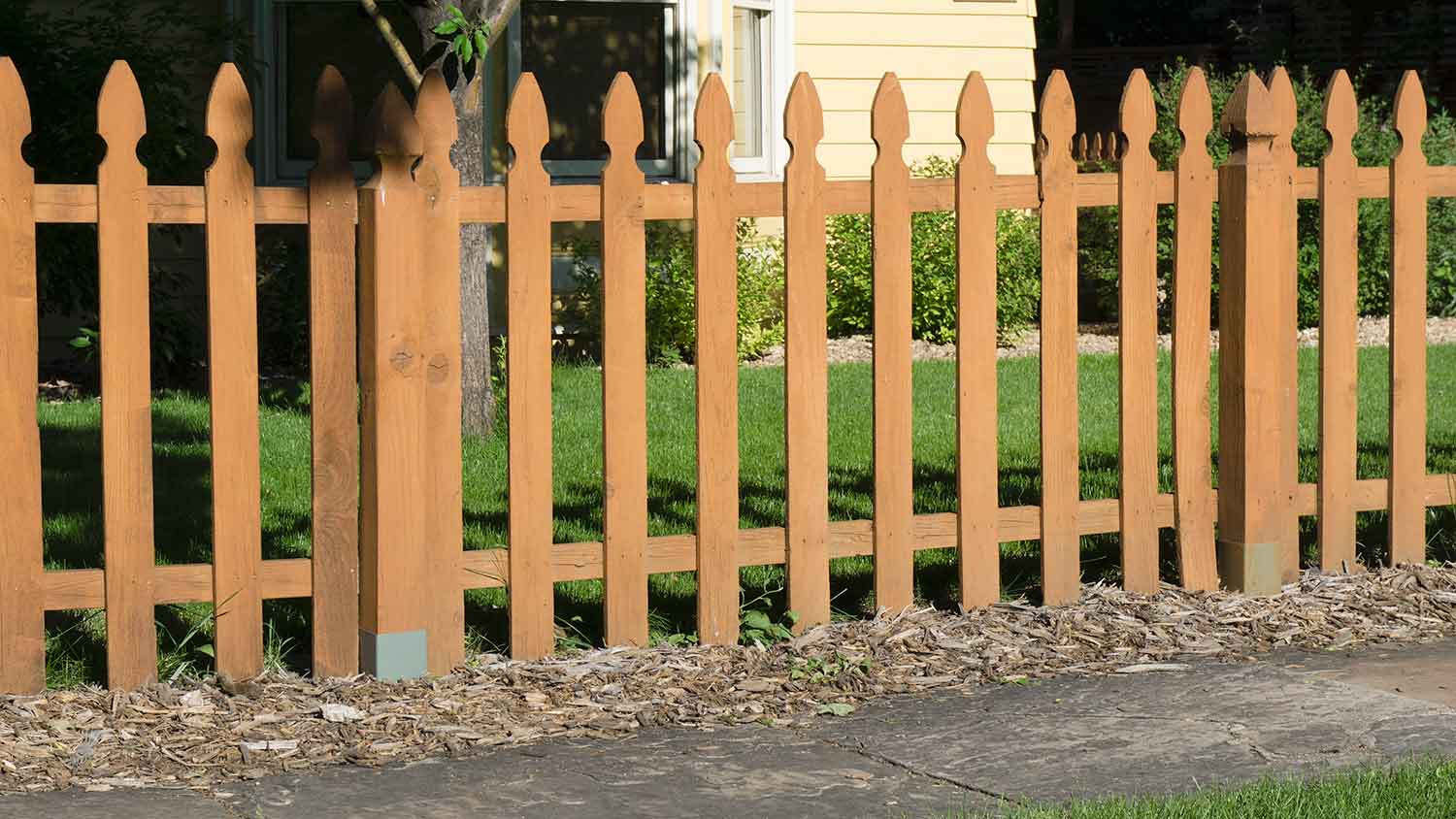How to Install Gate Hinges in 5 Simple Steps
Your new entryway hinges on this DIY guide


- Grease pencil
- Power drill with drill bit
- Screwdriver bit
- Concrete block or board for gate support
- Level
- Hinge with correct hinge screws
We don’t give gate hinges enough credit. Imagine fighting with your fence whenever you come home because the gate doesn’t swing smoothly. But hinges can be tedious to replace or install—when installing a gate hinge, every part must line up exactly to function. We’ll walk you through how to install gate hinges so you can stroll through your entryway without a hitch.
Prepping to Install Gate Hinges
The first thing you need to do is purchase your hardware and be sure it works with the type of gate latch you have installed. While there’s a wide variety available, there are some hinge types that are more common for gates, including:
Mortise hinge: This type, also known as a butt hinge, is made up of two leaves and has a knuckle in the center that houses the pin. It allows a gate to open from the left or right.
Strap hinge: A decorative hinge that extends out on either side and typically in an ornate pattern, a strap hinge is ideal for lightweight, self-closing doors.
T-hinge: A popular option for wooden gates, T-hinges combine butt and strap hinges and come in a variety of materials, including rust-resistant options.
Continuous hinge: A hinge that runs the length of a door jamb. It’s highly specialized and typically requires professional installation but may be necessary for tighter security.
Mark the Hinge Location
 Photo: yavdat / Adobe Stock
Photo: yavdat / Adobe StockUsing a grease pencil, mark the location on the gate where you plan on installing the hinge. Depending on which type of hinge you’re working with, it will determine if you need to install it on the exterior or interior of the gate, but you’ll ultimately choose the location based on what direction you want it to swing.
Drill Pilot Holes
 Photo: Ekaterina savyolova / Moment / Getty Images
Photo: Ekaterina savyolova / Moment / Getty ImagesDouble-check that your measurements are correct and that the direction you’ve chosen for the gate to open works with your space. Then, using your power drill with a drill bit attached, drill pilot holes where you’ve marked the location on the gate.
Take the Hinge Apart
Before installing the hinge, it helps to take it apart and work with the smaller pieces instead of trying to install one entire piece simultaneously. Replace your drill bit with the screwdriver bit as you prepare for installation.
Steady the Gate
Get the hinge ready for installation by placing the concrete block or board on the ground to support the weight of the gate while you install the hinge. Use a level to ensure your gate is even.
Install the Hinge Screws
 Photo: Christa Boaz / iStock / Getty Images Plus / Getty Images
Photo: Christa Boaz / iStock / Getty Images Plus / Getty ImagesUsing your screwdriver bit, install the hinge screws and tighten them as much as possible. Once installed, swing the gate open a few times to make sure it’s in the correct position and that the hinge is exactly where you want it. If the gate swings and stops where it’s supposed to, you know it’s level.
DIY vs. Hiring a Pro
If you’re not interested in a DIY project or simply don’t have the time, hire a local fence repair company to install the hinges for you. While installing gate hinges may not take as much time as other fence repairs, the cost for a professional fence repair typically ranges from $300 to $925.
Frequently Asked Questions
While many gate hinges are often made of extremely durable materials, such as galvanized steel, they can wear out after many years. How quickly they wear out also depends on how much use they’ve endured. It’s also possible for the hinge screws to fall out, which weakens the hinge. Once a hinge wears out, it’s time for a replacement so your gate doesn’t start sagging.
If you feel like your gate hinge needs hinge oil, then a silicone spray can work well. Another option is using white lithium grease. Fencing experts recommend lubricating gate hinges annually to prevent problems with operation and corrosion. Depending on how large the gate hinge is, it’s possible you may need to apply the lubricant with a grease gun.















